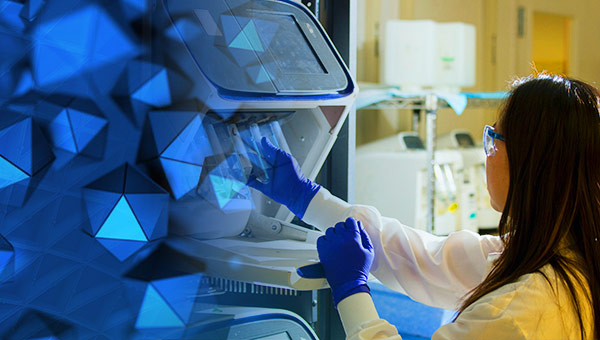Nam K. Tran, Ph.D., M.S., F.A.C.B., Associate Professor and Director of Clinical Chemistry
Ezra Amsterdam, M.D., Distinguished Professor, Cardiovascular Medicine
Stacey Howell, M.D., Resident Physician, Internal Medicine
Bryn Mumma, M.D., MAS, Assistant Professor, Emergency Medicine
Javier E. López, M.D., M.A.S., Assistant Professor, Cardiovascular Medicine
Background
Cardiac troponin (cTn) is the preferred biomarker that aids in the diagnosis of acute myocardial infarction (MI) as defined by the 3rd Universal Definitions of MI.1 This month's blog (Part 1 of 3) will review the clinical use of the current cTn assay and discuss the transition to new units of measurement. Future blogs will focus on a next generation of cTn assays.
Recommendations from the 3rd Universal Definition of MI
Acute MI should be diagnosed when there is clinical evidence of myocardial ischemia and injury that culminates in necrosis.1 Myocardial ischemia is determined by one of the following: (a) clinical symptoms, (b) new or presumed new significant ST-segment-T-wave changes or new left bundle branch block, (c) development of pathological Q waves on electrocardiogram, (d) imaging evidence of new loss of viable myocardium or new regional wall motion abnormality, or identification of an intracoronary thrombus by angiography or autopsy.
Cardiac troponin is the most specific blood marker of myocardial injury. To diagnose a MI, a rise and/or fall of cTN level above the 99th percentile of the upper reference limit (URL) needs to be associated with at least one of the above clinical findings of ischemia. At the 99th percentile level the assay should exhibit an imprecision of ≤10% coefficient of variation (CV). This 99th percentile level is often defined from a normal population provided by the assay manufacturer and verified locally by hospital laboratories upon implementation. At the 99th percentile mark, 99% of subjects have a level below the cutoff. Assay imprecision helps determine if cTn changes are due to myocardial injury or due to analytical and biological variability. A CV ≤10% at this 99th percentile is considered sufficient to detect “real” changes in cTN. Assays with CV >10% make determination of change more difficult and should not be used.
Recommended cTn assay units
The 3rd Universal Definition of MI establishes that cTn results be presented in nanograms per liter (ng/L) to result in whole numbers. For example, a current cTn level of 0.04 ng/mL would be the same as 40 ng/L when the units are changed. This change will reduce misinterpretations when future next-generation assays intending to improve sensitivity are made available.
Laboratory Best Practice at UC Davis Medical Center
Our clinical laboratory currently employs the 99th percentile cTn cutoff where assay imprecision is ≤10% (0.04 ng/mL). Starting on September, cTn units will change to ng/L as recommended by our multidisciplinary team including Cardiovascular Medicine, Emergency Medicine, and Pathology and Laboratory Medicine. You are reading this blog as a part of an educational program to members of our clinical community prior to this change. In future blogs, we will discuss a next-generation high-sensitivity cTn assay, and its anticipated implementation in 2018 at UC Davis Medical Center.
References
- Thygesen K, Alpert JS, Jaffe AS, et al.; Writing Group on behalf of the Joint ESC/ACCF/AHA/WHF Task Force for the Universal Definition of Myocardial Infarction. Third universal definition of myocardial infarction. Glob Heart. 2012 Dec;7(4):275-95.



